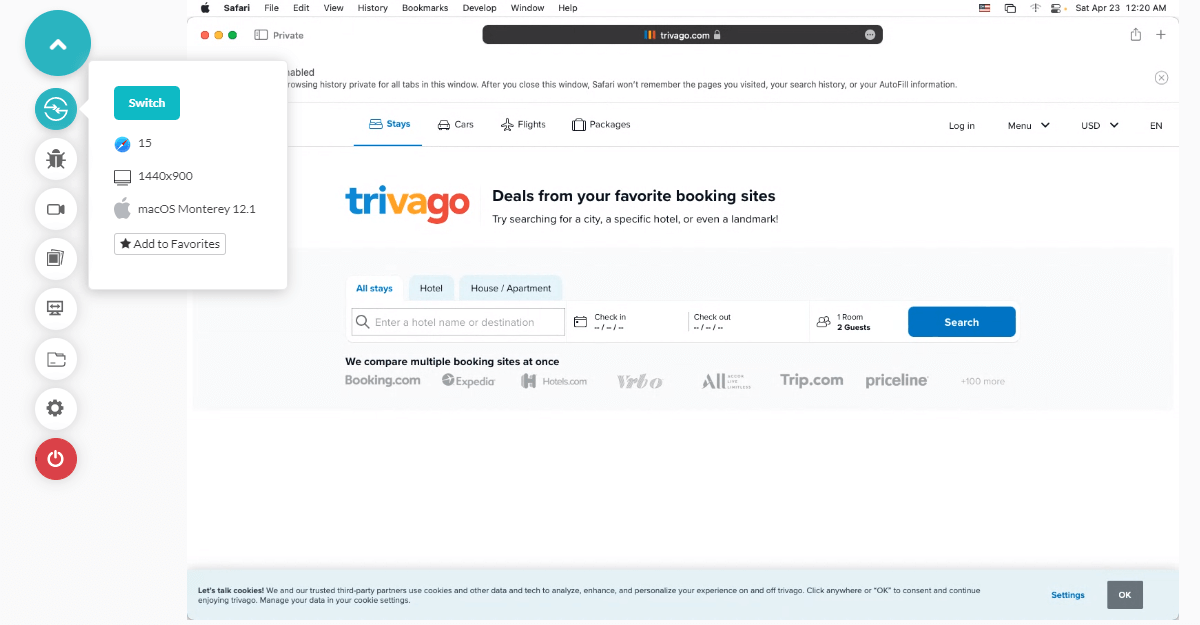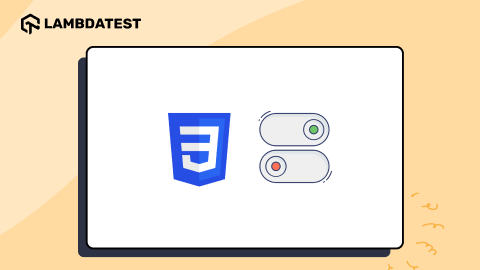Complete Guide To Spring Testing
Swastika Yadav
Posted On: April 25, 2022
![]() 69939 Views
69939 Views
![]() 15 Min Read
15 Min Read
Software testing is a non-negotiable aspect of the software development life cycle. Setting up and moving on with software testing might be a tedious task. You or your team may feel stuck devising a testing strategy or picking up a testing framework. However, the major roadblocks are either related to methodology or framework.This article revolves around how to perform testing of spring applications.
Spring Framework supports your whole testing ecosystem. Spring framework best aligns with the Agile methodology of software development. As agile methods offer a better environment for developers and testers to perform Unit testing, this Java-based framework adds the moon to it. Spring also offers excellent support for integration tests.
In this article, we explore the Spring framework and how to test applications built using Spring and Spring Boot frameworks.
TABLE OF CONTENTS
What is Spring Framework?
The Spring is an open-source framework based on Java. Released by Rod Johnson in June 2003, the primary purpose of the Spring framework is to provide Java applications with infrastructural support. It also eradicates various roadblocks that arise while testing Java-based in-container applications.
Spring as a framework is a wholesome body of codes and classes that developers and testers can use to tackle Java-specific problems and limitations in testing them. In the Spring framework, you do not need to create separate classes specific to Spring. This allows you to steer clear from getting dependent on the Spring framework. Hence, Spring is also called a non-invasive framework.
Read – Top 9 Challenges In Automation Testing [2022]
However, you can still create Spring-specific classes such as JNDITemplate, JDBCTemplate, etc. Spring, therefore, emerges as an overall solution for testing requirements for in-container applications.
How does Spring Framework work?
Programs based on JAVA EE are often very complex and involve heavy components. By heavy, I mean the components depend on the current operating system. This makes the application code interdependent. The term used for such conditions is – Tightly coupled, i.e., the application codes become tightly coupled to each other. This is when Spring Framework is not in use.
The primary weapon of Spring, or say the most crucial logic of Spring, is – Dependency Injection. This solves the problem of tightly-coupled architecture as it makes the application code decoupled. The whole meaning of dependency injection is to create such a pattern that, in turn, creates decoupled architecture.
The Spring framework also helps you tackle the testing problems based on methodology or framework. It can help you with the following testing needs. These are also called Features of Spring Framework –
Isolation
Your J2EE application may not support isolation testing without connecting to corresponding databases. However, you can perform isolation tests with the Spring framework by inoculating mock implementation testing. For example – Consider you have a service class depending on a domain class. Spring allows you to isolate that service class and perform the testing without worrying about database connections and domain dependencies.
Also, read – What Is Browser Sandboxing?
Data Access
In case you have dependencies that can’t be worked out, you’ll always have the option to resort to Spring helper classes. These increase the dependency on the Spring framework but can provide you with the workaround for the data access hierarchy. You can work with helper class templates like JdbcTemplate, TopLinkTemplate, etc.
Transaction Management
Spring gives you excellent support to track and manage local and global transactions. An abstraction framework achieves this within Spring. This abstraction framework gives a wide range of transaction management, from declarative to programmatic.
Furthermore, the Spring framework provides excellent support for Unit and Integration testing (as we talked about before).
Software Testing Strategies and Limitations without Spring Framework
Let us first understand what exactly they are Framework-related blocks. Let us assume your project is going smoothly according to agile methodology, and most of the work is based on the J2EE architecture model. Software testing is mainly based on Unit testing and Regression testing. Unit testing, in particular, is super important to attain high code coverage, which can’t be performed in J2EE architecture.
Why so? Because the application server container is the core of the J2EE runtime environment. This makes it hard to perform Unit testing, which needs to be performed outside the container. Therefore, to thoroughly test and cover a J2EE-based application, it is necessary to deploy it inside the container. Here comes another catch – In-container software testing kills productivity. It is prolonged and can heavily impact the timelines of your project cycle.
There is no need to worry, though. This framework-related block can be easily solved by considering the framework Spring. Spring is an application development framework based on Java enterprise. It has the potential to support both Unit and Integration testing for your software. In fact, the main motive behind software testing with the Spring framework is to smoothen the process of Unit testing following the agile strategies.
Let us first understand the Software Testing types –
Unit testing
Let us get on with a simple example – Consider a piece of JAVA code having 1000+ lines. First of all, this violates SRP (Single responsibility principle), which states that a code module should only take care of one functionality. It is like the divide and conquers principle applied in software development.
Anyways, violating principles or not, you have this code now. How do you plan to perform Unit testing? It becomes complex to unit test this extended code and ensure proper coverage. No coming to the definition of Unit testing –
Unit testing is a software development process where units of software, application, or code units are tested independently to ensure proper working and desired results. In Unit testing, codes and functionalities are isolated to ensure accurate operations.
Unit testing also favors quick testing of new changes or methods to the existing code. Manual Unit testing is done by developers at the early stages of the project and also saves a lot of time and effort in the later stages.
Unit testing, an essential component of Test-Driven development, has three stages –
- Plan: Preparation of unit test and review.
- Design: Test cases and scripts are made.
- Test: Code is unit tested.
One of the most popular frameworks for Unit testing is JUnit. In JUnit, you can use Mock Objects and initialize objects with the new keyword. You also don’t need to worry about in-container resources, JDBC connection pools, JNDI, etc. The mock Object testing technique makes it easy to perform isolated unit tests.
LambdaTest offers free JUnit certification for Java developers that can help you advance your career in Java development and testing.
The following is a glimpse of the JUnit Certification from LambdaTest.
Integration testing
Testing modules integrated together is vital to test them in isolation. If a class or module works fine alone, it doesn’t guarantee a perfect result when combined or integrated with other modules. Hence, the need for Integration testing arises. Integration testing is the type of testing where specific modules and classes are combined with being tested as complete functionality.
Understand it like this – A team of developers develops your project’s different functions and modules. Each developer works on different functionality and develops different modules (Agile Software Development methodology). In Unit testing, we test those individual modules in isolation. The purpose of Integration testing is to ensure whether these different modules work fine while combined or merged.
Read – Enabling Agile Software Testing With Automation
Integration testing test cases are designed mainly to focus on the interaction that happens between modules. As the individual functions are already tested in Unit testing, Integration testing tests the linking between these individual functions and modules. One can also think of Integration testing as complementary to Unit testing.
Regression Testing
This testing practice comes into the picture when any code changes or when the software package is deployed to production. This ensures that the complete functionality works as expected. Better consider it as the final step of verification of whole product functionality.
Several more testing strategies are incorporated in a software development lifecycle. For example –
- Load Testing: These tests verify the scalability of the proposed software.
- DB Testing: These tests ensure whether the data access levels are working as expected and data integrity is taken care of.
- Profiling: These tests ensure proper garbage collection and detect any memory leaks.
Despite being highly useful, all these testing methods may or may not work in specific environments. For example – Applications based on J2EE architecture require specific frameworks to support different forms of testing. In this article, we are talking about how to perform Spring testing.
Read more – Regression Testing: What Is It and How to Do It?
Spring Testing with Spring Framework
Shown below is how to run Spring web tests using the Spring framework.
Unit testing with Spring Framework
If you follow the standard Spring Framework architecture, the dependency injection and use of Mock Objects can make Unit testing super convenient for you. Testing individual code and modules, i.e., isolation tests, is easy to execute using Mock Objects.
Unit tests, in general, execute fast, hence eradicating the need to set up any runtime architecture. Spring testing adds the moon to these by providing test support classes and mock objects. Spring has several packages to support mock objects, like JNDI, Servlet API, etc.
Read – Complete JUnit 5 Mockito Tutorial For Unit Testing
Test Support Classes for Unit testing
The Unit testing support classes in Spring Framework are divided into the following two categories –
- General Testing Utilities
- Spring MVC Testing Utilities
For general testing utilities, you get the org.Springframework.test.util package. This package offers multiple general testing utilities that you can use in the Unit and Integration testing. This package considers all the scenarios that you may come across in writing unit test classes. For example –
ReflectionTestUtils: It is a reflection-based method used in scenarios where there is a need to play around with constant value, invoke or set a non-public method, or use call-back methods.
Now for Spring MVC testing utilities, you’ll use the org.Springframework.test.web package that contains the ModelAndViewAssert method. This can be used with JUnit to perform unit tests incorporating the ModelAndView objects.
Read – How to use Assert and Verify in Selenium WebDriver
Integration testing using Spring Framework
The Spring-test module within the Spring framework provides excellent support for Integration testing. The pain of connecting to another infrastructure or requiring deployment to an application server is high.
The proposed Spring-test module helps you fight that pain. It includes the org.Springframework.test package that provides various necessary classes for Integration testing.
The Integration testing support provided by Spring has the following goals –
- Manage Spring IoC container caching between tests.
- Manage the supply of base test classes specific to the Spring framework.
- Provide and manage Dependency Injection.
Integration tests using the Spring framework can be executed just like JUnit tests. Integration tests include testing at an integrated level rather than isolated. Hence they are generally slower. But when using the Spring framework, NO! They are not.
Spring-specific integration test classes present in the org.Springframework.test package cover almost every corner.
Following are some of the base integration test classes provided by the Spring framework in this package –
| Test Class | Working |
|---|---|
| AbstractJpaTests | This class tests the JPA functionality and offers an instance called EntityManager that can be used to call these JPS methods. |
| AbstractModelAndViewTests | This class is used to test the two layers in the application, i.e., the presentation and controller layer. |
| AbstractAspectJpaTests | Extended by the AnstractJpaTests class, it can be executed for LTW (Load-time weaving). |

2M+ Devs and QAs rely on LambdaTest
Deliver immersive digital experiences with Next-Generation Mobile Apps and Cross Browser Testing Cloud
Spring Testing Using Spring Boot
With Spring Framework, it becomes much easier to run Spring web tests and more efficient when Spring Boot comes into action. Spring boot is a Spring-based framework that allows fewer dependencies and faster bootstrapping than Spring itself. It offers an immense set of features for performing Unit and Integration testing. The Spring-boot-test module and Spring-boot-test-autoconfigure configuration help you run the Spring boot application test.
You can use the following support libraries to pull required testing dependencies –
JUnit: This is probably one of the best Unit testing frameworks you’ll get hold of. It provides you with an all-around testing environment, especially for developer-side testing. Junit is a java-based test framework and works wonders in the test-driven development cycle.
Mockito: As the name gives away, it is a Java Mocking Framework.
JSONassert: This support library helps write unit test cases based on JSON.
Spring Test: The utility that provides support for Integration testing.
Spring boot comes with comprehensive support for writing and executing Spring boot web tests. From annotations to use in test classes to individual test-specific requirements, it gives you all. Do you want an example? Here we go –
To get on with testing features, you need to import the org.Spring boot.app package. You can also use @SpringBootTest annotation. This annotation is often used along with @RunWith(SpringRunner.class). These, in association, load the application context and many more behind-the-scenes requirements. However, the @SpringBootTest won’t initialize the server by itself. You need to work with a mock environment for that.
Here is a code snippet for testing Spring boot applications –
The above code snippet must have given you a clear idea of how to write test classes using the Spring-boot annotations. Despite sounding complex, Spring testing is fairly easy. As you have the option to integrate multiple frameworks and utilities, Spring testing (Unit and Integration testing) becomes easy and can be performed within in-container applications with accurate outcomes.
How to test Spring applications on the cloud
In the earlier section on Spring testing, we explored different ways to test Spring and Spring boot applications. Now let’s see how to test your spring or spring boot applications utilizing cloud-based testing platforms. Cloud-based testing platforms like LambdaTest help hasten your entire testing workflow by providing a scalable and reliable testing cloud for both manual and automated Spring testing.
- Manual Spring testing
- Automated Spring testing
To carry out manual and automated browser testing of Spring or Spring boot applications, you can harness the immense capabilities offered by the LambdaTest platform. It is a cloud-based web testing platform that enables developers and testers to perform live and automated cross browser testing on an online browser farm of 3000+ browsers and OS combinations.

Using the LambdaTest platform for Spring testing, you can –
- Cut down test execution time up to 10X and ship quality builds faster.
- To speed up your automation testing cycle, integrate test suites with the best CI/CD tools like Jenkins, Bamboo, and Travis CI.
- Get Enterprise-grade security. Read about LambdaTest security.
LambdaTest also offers mobile app testing on a real device cloud and emulators and simulators. It lets you test apps manually and performs mobile automation testing across 3000+ real Android and iOS devices.
Check out the below video on real-time testing on real devices to run your Spring web tests and Spring boot web tests.
Subscribe to the LambdaTest YouTube Channel and stay updated with the latest tutorial around Selenium testing, responsive testing, Cypress test automation, and more.
Conclusion
In this article on Spring testing, you have a basic idea of what Spring testing is, how it helps in framework-related blockers, and all the steps you need to perform Spring testing of applications.
But, for sure, this may look like a very confusing task to do, and you may also end up making countless mistakes. For example – formatting the test classes incorrectly, not implementing the specific launchers, etc. This is where LambdaTest helps you. The Online Spring Testing Cloud by LambdaTest helps you test your Spring-based websites and applications across the latest and legacy browser and OS combinations. Also, if you’re stuck in any of the steps, it provides 24×7 support.
Frequently Asked Questions (FAQs)
What is Spring boot testing?
To test apps, Spring Boot includes a number of utilities and annotations. Two modules provide test support: spring-boot-test provides essential components, and spring-boot-test-autoconfigure facilitates test auto-configuration.
How do you run a Spring test?
You can run the Spring test via two frameworks: Spring and Spring boot. To perform Spring web testing, you can use a cloud-based platform like LambdaTest to run live and automated Spring tests across 3000+ real browser and OS combinations.
Is TestNG supported by Spring?
Yes! The org.springframework.test.context.testng package supports classes for running TestNG based test suites.
Got Questions? Drop them on LambdaTest Community. Visit now















